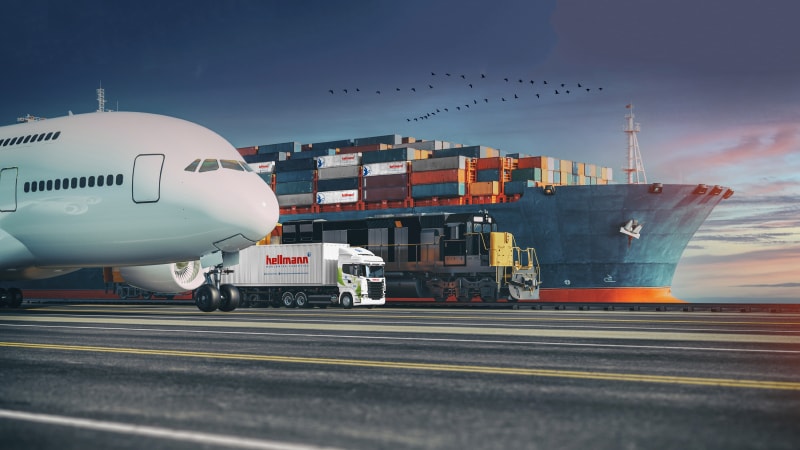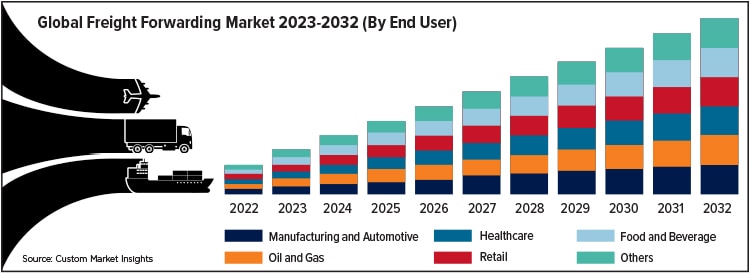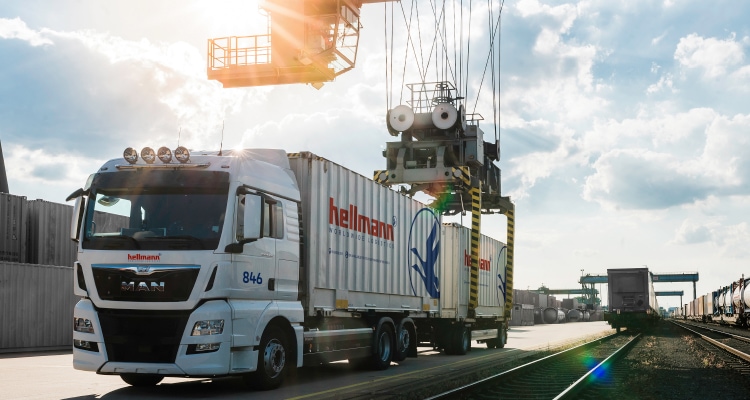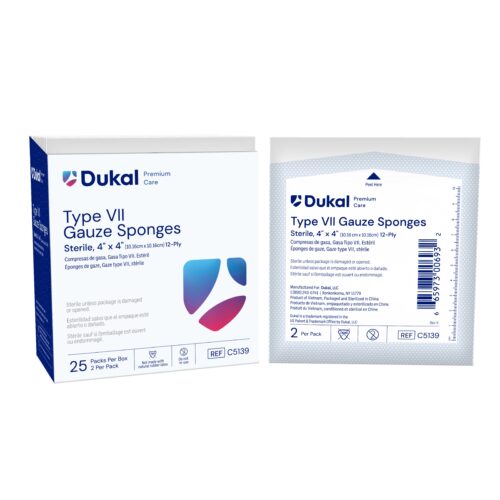Freight Forwarders & Shippers: Forward Motion

With innovative solutions and technology, and productive collaborations, freight forwarders position complex global supply chains for success.
As supply chains have become more global and complicated, freight forwarders can play an increasingly important role in helping shippers move their products safely, cost-effectively, and on time.
“Freight forwarders orchestrate the movement of goods,” says Richard Patry, vice president, managing director, Canada, with DHL Global Forwarding.
Among other responsibilities, forwarders can act as intermediaries between the many parties involved in international supply chains, coordinate transportation modes, manage documentation, and help to “de-mystify” the complexity inherent in international trade.
For instance, some companies have diversified their international supply chains in what’s sometimes referred to as China Plus One. They continue to source from China, while seeking suppliers in other countries. This reduces the risk of relying so heavily on vendors in one country, but it also adds complexity.
“Many companies don’t have full teams to manage the complexity, so they have a greater need for freight forwarders,” says Lauren Pittelli, principal with Baker Logistics Consulting.
Domestic Freight Forwarding Business Grows

While most freight forwarding activity focuses on international shipments, a growing segment is geared to domestic shipments and over-the-road services. One reason is the increased activity in nearshoring and reshoring. The Reshoring Initiative reports that 364,000 jobs due to reshoring and foreign direct investment were announced in 2022, up 53% from 2021.
With supply chain visibility becoming more critical, so has collaboration among shippers, suppliers, freight forwarders, and logistics partners, as well as the application of digital technologies, says Matt Goker, CEO with ATA. Through technologies like artificial intelligence, the Internet of Things, and blockchain, freight forwarders that offer digital platforms can provide shippers with real-time visibility and market intelligence to inform decision-making.
By implementing application programming interfaces (APIs), freight forwarders can retrieve real-time data—such as information on potential obstacles from port congestion or weather-related events—from third parties. They then can determine how best to adjust to the changes.
Here’s a look at a few successful freight forwarder partnerships that provide shippers with innovative solutions, relevant advances in technology, and productive collaborations.
Dermavant and Hellmann Worldwide Logistics:
48 Hours to Product Distribution

Hellmann Worldwide Logistics helped Dermavant Sciences ship to customers within 48 hours after FDA approval of its VTAMA cream.
About 48 hours after Dermavant Sciences received approval from the U.S. Food and Drug Administration (FDA) to provide VTAMA (tapinarof) cream 1% in the United States, the company was shipping the product from its U.S. distribution centers into pharmacies and patients’ hands.
This feat typically takes companies three months after FDA approval, says Chad Eastman, director of global logistics with Dermavant. VTAMA cream is the first novel chemical entity approved for psoriasis in the United States in the past quarter-century, the company reports.
The rapid distribution was made possible through the Pre-Launch Activities Importation Requests (PLAIR), which enabled Dermavant to import VTAMA cream into U.S. distribution centers for staging, ahead of FDA approval.
Dermavant worked with the FDA to be granted the ability to import under the PLAIR program. Once it was granted, Hellmann Worldwide Logistics assisted in the shipping and importation clearance of VTAMA cream into the United States.
“Shipping to our customers within 48 hours of FDA approval is an incredible feat,” Eastman says, noting that VTAMA cream, like all medical products, must comply with stringent temperature and other controls while it’s in transit.
Behind the launch was more than one year of planning, as well as close integration between Dermavant and Hellmann. While waiting for final FDA approval, both Dermavant and Hellmann prepared a detailed playbook that would guide the launch.
The partnership between the two companies started in late 2021. “We quickly aligned on shared interests,” Eastman says.
Dermavant was looking for a partner that takes a “white glove” approach to logistics and could design a best-in-class shipping structure. Hellmann brought a deep understanding of healthcare logistics, a strong global network of products and services, and the distribution practices and policies to help Dermavant comply with the myriad regulations that govern cross-border shipments of healthcare products.
While all medical products must comply with rigorous safety requirements, “Dermavant’s launch processes and requirements are industry leading,” says Chris DiBernardi, director of business development healthcare with Hellmann.
The playbook documents the rigorous risk mitigation processes and protocols Hellmann and Dermavant jointly follow. This includes, for example, the processes to follow if a truck breaks down or if any products fall outside the temperature controls during transportation.
Through its Smart Visibility solution, Hellmann leverages 5G technology to provide full, real-time visibility from dock-to-dock or port-to-port on every shipment’s temperature, location, and security across all modes of transportation.
“You turn the transmitter on and can see real-time shipment location and conditions inside the container. Smart Visibility also has the capability to track carbon dioxide emissions and provide KPI dashboards and reports,” DiBernardi says.
Should any deviations from established parameters occur, both companies know and can immediately implement the protocols in place to address them. “It provides a level of surety,” he says.
The Smart Visibility system also offers robust reporting tools that enable shippers to analyze and improve performance. As Dermavant continues to compile this data, it’s starting to focus on the next phase of its logistics processes. For instance, it’s considering potential alternative transportation modes that could be more sustainable, while maintaining product quality and integrity.
The tight communication and integration with Hellmann’s customs brokerage team, as well as its involvement in planning, also contributed to the successful product launch. While many operations and brokerage groups operate in disparate realms, having them work together was more effective. “We don’t encounter challenges because all the documentation was reviewed in advance by their teams,” Eastman says.
“Dermavant offers a white-glove, high-touch customer focus,” he says. “This requires extensive preparing and planning and aligning with partners like Hellmann that share our commitment.”
Kaiser Aluminum and SEKO Logistics:
An Innovative Shipping Approach

A strong partnership with its forwarder enabled Kaiser Aluminum to move its aluminum mill products despite international shipping disruptions.
Prior to the international shipping crisis of several years ago, Kaiser Aluminum Corporation, a leading producer of semi-fabricated aluminum products, enjoyed “very set lanes and an extremely stable shipping environment,” says Karen Sales, planning project facilitator and outbound logistics manager for the Trentwood, Washington location. “That almost all broke overnight.”
Sales reached out to more than 60 contacts, searching for a firm that could offer a cost-effective way to move products across North America and on to other parts of the world. Most providers pointed to the upended state of international shipping and said there was nothing they could do. “SEKO Logistics was the first one to try to figure out what we could do together,” Sales says.
SEKO suggested trucking shipments from Washington state north to Vancouver, Canada, and then using Canada Rail to move them across the country. It was an option SEKO had begun evaluating during the West Coast port strikes. “It was part of our fallback plan,” says Paul Burkhart, managing director for SEKO.
The Seattle area had been cut off from ocean routing to Europe and South America for roughly two years. Burkhart and his team had been looking for a solution for smaller volumes, as some of SEKO Logistics’ customers were losing business due to the lack of shipping options.
SEKO had been using truckers to help move smaller container volumes to Canada. The company then added the ability to move flatbeds to Canada. “We thought, ‘Let’s give it a try,’” Sales says.
“It takes a leap of faith to move freight into another country before we export to a third country,” Burkhart says. The solution requires thorough documentation and knowledge, as well as a strong partner and a top-notch information system to track shipments.
Kaiser Aluminum and other shippers can track their shipments through SEKOHarmony. “We use it daily,” Sales says.
In fact, Kaiser has decided to continue to send shipments from the United States through Canada, due to the stability and efficiency of the route, Sales notes.
Dukal and Mallory Alexander: A Healthy Future

Healthcare professionals continue to confront product delays and shortages, as well as supply chain disruptions. At the same time, a lack of visibility to the disruptions often leaves healthcare organizations without the insight they need to proactively address these challenges, says Amanda Frisbie, marketing communications manager with Dukal LLC, a developer and manufacturer of healthcare products.
In addition to the impact on patients’ treatments, product stockouts, delays, and cancellations stress the financial state of healthcare organizations, many of which are already under strain.
Dukal, through its partnership with Mallory Alexander International Logistics and the development of Dukal InSight, is helping to change this.
The team at Dukal believes better health leads to a better future, and that an effective supply chain has a role to play in achieving this.
“Manufacturing and supply chain excellence allows us to mitigate disruptions and create solutions that better serve the needs of healthcare professionals and patients,” says Siobhan Kelly, vice president of supply chain.
One key to Dukal’s efforts is its partnership for the past several years with Mallory Alexander. Together, the companies developed Dukal InSight, which provides intelligent, real-time visibility from each product’s point of purchase until it’s delivered.
“We’re able to build an intelligent and proactive supply chain,” Kelly says. “We can see and respond to disruptions before they impact patient health or healthcare organizations’ revenues.”
The system also facilitates on-time and accurate product delivery, as well as advanced product assignment.
“Mallory’s order management process brings horsepower to Dukal’s InSight solution,” says Daniel Woodcock, vice president of administrative services with Mallory Alexander. This not only boosts efficiency, but also becomes a selling point, as customers today—and particularly those in healthcare organizations—require detailed and granular visibility.
At the start of production, Dukal InSight assigns each order a product allocation. Because the system provides visibility to inventory on hand, inventory in production, and inventory in transit, as well as each customer’s requested delivery date, it can assign inventory in ways that make the most sense.
For example, if the system shows inventory on hand, as well as a shipment that’s slated to arrive in the next day or two, Dukal might assign the inventory in transit to an order with a deadline that’s one week away, knowing it will arrive in time. The on-hand inventory can remain available for new customer orders that have tighter delivery deadlines.
Having this visibility also enables Dukal to focus on exceptions, such as unforeseen production delays.
It’s not only Dukal that can leverage this information. Mallory’s work to enable electronic data interchanges allows Dukal to communicate this data to its customers.
The shipment data collected by Dukal InSight extends to the item level and is communicated to customers with open orders through weekly automated emails. Customers receive a spreadsheet with order milestones, such as the date and time a sales order is received, the date it departs the port of origin, and when it arrives at a U.S. port.
They can upload the information into their systems and convert it to their preferred format.
“Offering customers full visibility means they can be proactive and maximize efficiency,” Frisbie says.
Thinking Outside the Box
By working with Mallory Alexander, Dukal was able to “think outside the box,” Kelly says. While this project began with the goal of making the order management process easier, it evolved to a system that leverages intelligent visibility to mitigate supply chain disruptions and better serve customers—offering Dukal a competitive advantage.
“Now, we’re able to see the supply chain end to end and can take action,” she adds.
The solution continues to evolve. “We’re continuing to add information and insights,” Frisbie says, “and provide them for our customers.”
5 Things to Look for in a Freight Forwarding Relationship
Here are 5 factors to consider when evaluating prospective freight forwarders.
1. Your organization’s size. “While the biggest shippers often get dedicated staff, smaller shippers can get lost in a big shop,” says Lauren Pittelli of Baker Logistics Consulting.
2. Customer service. Ask about the process if something goes wrong. For instance, how quickly can you connect with a person?
3. Visibility to first generation data. Freight forwarders should be able to access automated feeds from carriers and government agencies. If they can’t and instead, have to retype data, the risk of errors and delays increases.
4. Consolidation and deconsolidation services. The ability to consolidate shipments boosts transportation efficiency.
5. Expertise. The freight forwarder should possess in-depth knowledge of regulations, custom procedures, and other complexities of international trade.
